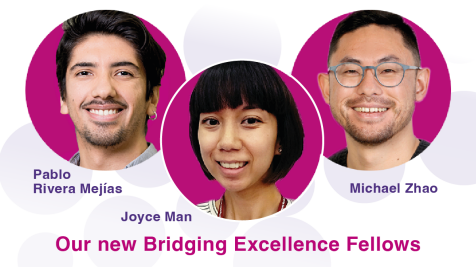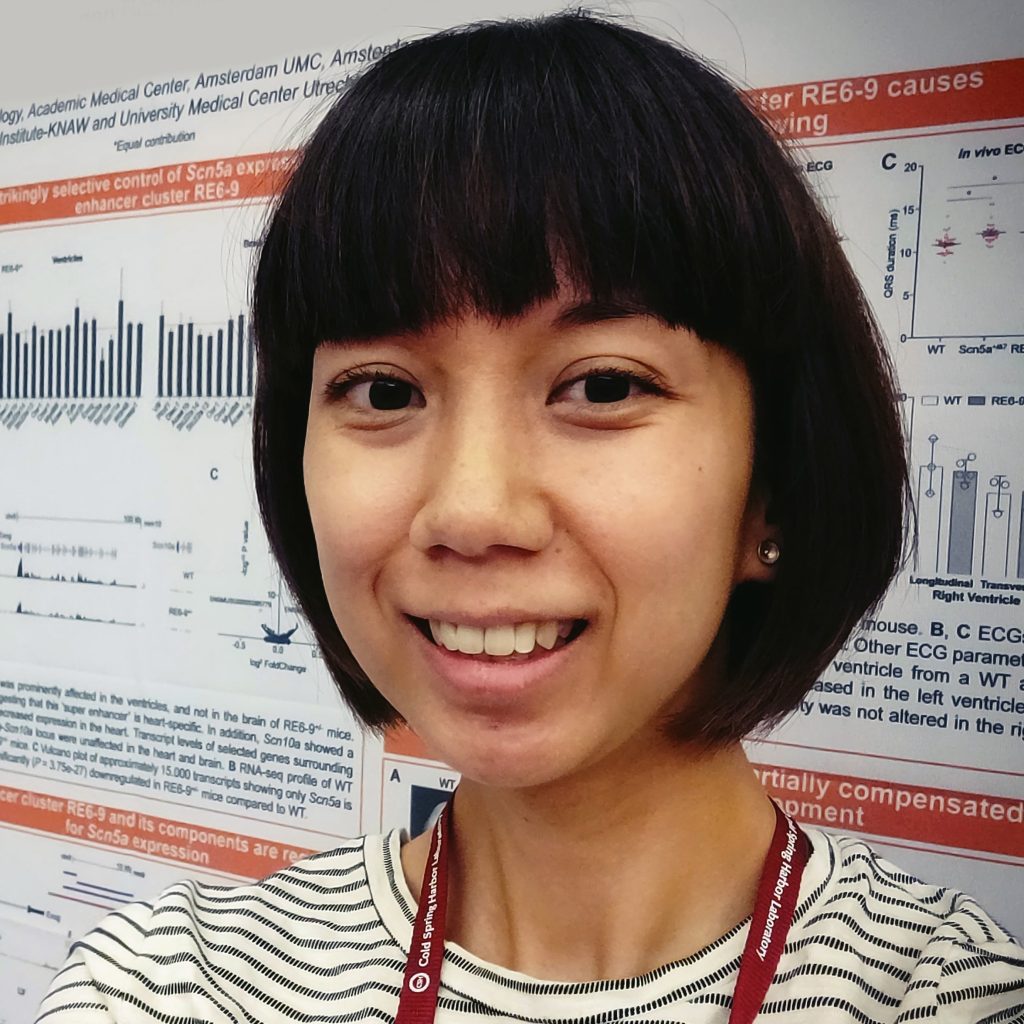Second cohort of Bridging Excellence Fellows launch their transatlantic careers

The Life Science Alliance has award three Bridging Excellence Fellowships to postdoctoral scientists working on joint projects between EMBL and Stanford University. The fellows, who are based at EMBL for three years, undertake extended visits to Stanford University immersing themselves in a new scientific culture, and benefitting from an international training opportunity to develop their global profile. In addition to the three year position, the researchers receive support for consumables, their visits abroad and attending international conferences.
We are thrilled to announce our second cohort of Bridging Excellence Fellows:

Joyce Man, with Edith Heard (EMBL) and Howard Chang (Stanford)20
“Spatio-temporal investigation of X-inactivation mechanisms in vivo”
It’s well known that biological sex is the result of one X and one Y chromosome for males and two X chromosomes for females, but you may not have given a second thought to the implication of females having a two X chromosomes. In mammals, female embryos silence one of their two X chromosomes to avoid having a double dose of genes that can have lethal consequences. While the process of X-chromosome inactivation and one of the key players – a non-coding RNA called Xist – is well known, the precise mechanisms by which Xist acts is unclear. Joyce’s work will utilize cutting edge genomics and imaging approaches to compose a map of Xist activity to lift the silence on one of biology’s most puzzling processes. “I am very thrilled to have this wonderful opportunity” said Joyce. “Being exposed to cutting-edge research, using exciting new technologies and most importantly connecting with scientists across different continents – it’s an amazing scientific adventure.”

Pablo Rivera Mejías, with Mikhail Savitski, Sinem Saka (EMBL) and Monther Abu-Remaileh (Stanford)
“Connecting organizational scales from the bottom-up to investigate emergence in embryonic pattern formation”
We are made up of trillions of cells, functioning together as one healthy cooperative unit. Yet we started as one single cell, replicating over and over again, organizing into different tissues and developing specialized functions for our heart, nervous system, skin and more. Embryonic patterning plays an essential role in the developmental process and lays the groundwork for future organ development. Michael’s research combines quantitative biochemical methods, with mathematical modelling and experimental models of pattern formation to investigate how cells work together to form patterns and organized structures. Having started in the Aulehla lab at EMBL after his PhD at Stanford, he is a seasoned transatlantic traveller. “By experiencing both US and European approaches to science, I have developed an increased awareness for the size and diversity of the scientific community” said Michael. “Immersion within these two environments allows me to be more creative in my own approach to science and expand my network of potential collaborators!”

Michael Zhao, with Alexander Aulehla, Anna Erzberger (EMBL), and James Ferrell (Stanford)
“Mitochondrial thermal proteome profiling for the study of oncometabolites interactome.”
“To learn, respect, and understand another culture is an invaluable experience that I’m thrilled to be repeating in my postdoc” said Pablo. Having led his PhD between two institutions in Chile and Germany, Pablo is a firm believer in the impact that science and culture have on our ideas and approach to problem solving. He brings his expertise in organelle biology, to study how a build-up of mitochondrial metabolites can drive the development of cancer. Combining the Savitski group’s cutting edge method of thermal proteome profiling with the Abu-Remaileh lab’s expertise in organelle immunopurification, Pablo aims to map interactions between mitochondrial-metabolites and proteins in cancer cells with the hope of identifying new therapeutic targets.
Navigating the path to global science
These fellows are the engines driving international collaboration. Proposing their own ambitious research projects between one lab from EMBL and one lab from Stanford University, they forge critical links between the two institutions, leveraging the unique combination of expertise and technologies to fuel scientific discovery. It also takes a touch of bravery to put oneself forward for a transatlantic fellowship in the middle of a pandemic. Lars Steinmetz, Director of the Life Science Alliance describes the opportunity to work across the US and Europe as an “an amazing, formative journey both scientifically and personally. These fellows are all excellent young scientists. But you can tell they also have this ambition and spark for adventure that goes beyond just wanting to do great research – they want to be global scientists. I’m excited to see where this route leads them.”
The Bridging Excellence Fellowships will continue to provide opportunities for ambitious researchers to propose their own joint research over the coming years. If you’re ready to start your own transatlantic journey, follow us on social media for updates on the next call for applications in 2022!
You can read more about the fellowships here and follow us on twitter @LiSciAlliance for the latest notifications!